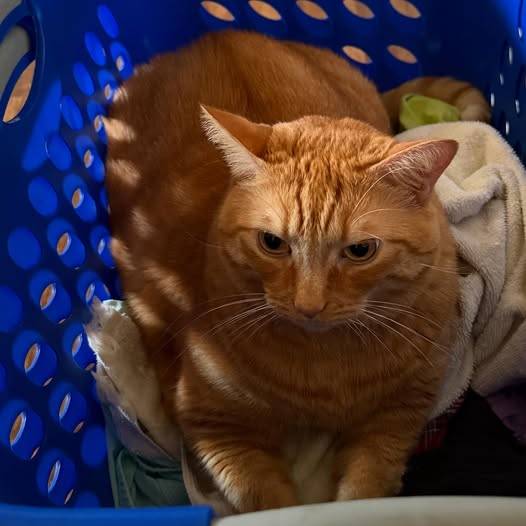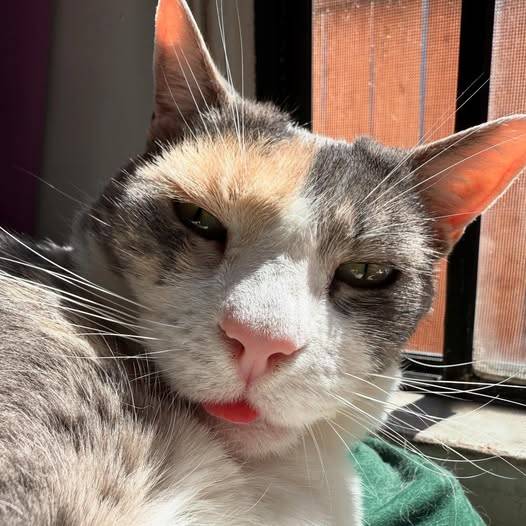Title: You Oughta Know
Character/Pairing: Buffy/Faith, S4
Summary: I'm not gonna fade as soon as you close your eyes.
AO3 | DW | Tumblr
morning gazette.


This time it was online, in Teams, and worked a bit better than some Team events I've attended, or maybe I'm just getting used to it.
A few hiccups with slides and screen sharing, but not as many as there might have been.
Possibly we would rather attend a conference not in our south-facing sitting-room on a day like today....
But even so it was on the whole a good conference, even if some of the interdisciplinarity didn't entirely resonate with me.
And That There Dr ![]() oursin was rather embarrassingly activating the raised hand icon after not quite every panel, but all but one. And, oddly enough, given that that was not particularly the focus of the conference, all of my questions/comments/remarks were in the general area of medical/psychiatric history, which I wouldn't particularly have anticipated.
oursin was rather embarrassingly activating the raised hand icon after not quite every panel, but all but one. And, oddly enough, given that that was not particularly the focus of the conference, all of my questions/comments/remarks were in the general area of medical/psychiatric history, which I wouldn't particularly have anticipated.


Challenge 1: Hodge Podge A new challenge idea I came up with all sorts of things to get players rolling out the fills and scoring points!
Sign up: July 3 Rd to July 19th @ 8PM EST / 12AM GTM
Opening Date: July 20
Closing Date: October 12
For the first time in forever I have been making The Famous Aubergine Dip (the vegan version with Vegan Worcestershire Sauce, I discovered the bottle I had was use by ages ahead, yay). This required me acquiring aubergines from The Local Shops. There is now, on the corner where there used to be an estate agent (and various other things before that) a flower shop that also sells fruit and vegetables, and they had Really Beautiful, 'I'm ready for my close-up Mr deMille', Aubergines, it was almost a pity to chop them up and saute them.
A little while ago I mentioned being solicited to Give A Paper to a society to which I have spoken (and published in the journal of) heretofore. Blow me down, they have come back suggesting the topic I suggested - thrown together in a great hurry before dashing off to conference last week - is Of Such Significance pretty please could I give the keynote???
Have been asked to be on the advisory board for a funded research project.
A dance in the old dame yet, I guess.



What I read
Finished Murder in the Trembling Lands and okay, you have a mystery based on something that happened during some very confusing battle events back in the past, and this is all taking place during the upheavals of carnival in New Orleans decades later, and people lying, giving their versions of past events based on gossip, rumour, speculation etc etc, and possibly this was not really one to be reading in fits and starts.
Zen Cho, Behind Frenemy Lines (2025). This was really good: it does what I consider a desideratum particularly in contemporary-set romance, it has a good deal of hinterland going on around the central couple and their travails. And is Zen Cho going to give us a political thriller anytime, hmmmm?
Natasha Brown, Universality (2025), which I picked up recently as a Kobo deal. I was fairly meh about this - kind of a 'The Way We Live Now' work, about class and the media and establishing narratives and the compromises people make, I found it clunky (after the preceding!) if short, though was a bit startled by the coincidental appearance of the mouse research I mentioned earlier this week being cited by an old uni friend of one of the characters, now veering alt-right.
On the go
Also a Kobo deal, Taffy Brodesser-Akner, Long Island Compromise (2024): in my days of reading fat family sagas set in T'North, this would have been the 'to clogs again' section of the narrative.... it's sort of vaguely compelling in its depressing way.
Up next
Have got various things which were Kobo deals lined up, not sure how far any of them appeal. Also new Literary Review, which has my letter in it. The new Sally Smith mystery not out for another week, boo.



The following are all in the area of environmental history: enjoy!
Rebecca Beausaert. Pursuing Play: Women's Leisure in Small-Town Ontario, 1870-1914.
Beausaert’s discussion of the growing popularity of outdoor recreation in the early twentieth century, as opposed to earlier forms of indoor leisure such as book clubs and church gatherings, also highlights the role of women in the rise of environmental activism in towns like Elora. In these communities, grassroots efforts to maintain the local environment and cater to the influx of ecotourism travelers flourished, further illustrating the agency of women in shaping both their social and environmental landscapes.
McNally’s emphasis on the role of race in Muir’s thinking, and, therefore, on his vision of wilderness preservation, helps readers more clearly see Muir not as wilderness prophet but as a man of his time coming to terms with the consequences of American expansion.
The book begins with Rio in the nineteenth century and shows that Cariocas regularly went to bathe in the ocean. The work incorporates an assortment of sources to give a vivid picture of this process. For instance, it was customary for bathers to go before dawn—as early as 3 a.m.—since many in Rio went to bed early in the evening, but also due to colorism within Brazilian society. The dominant white society enjoyed swimming in the ocean but also prized fairer complexions and thus aimed to avoid the sun. Yet, few amenities existed for sea-bathers. The city dumped its sewage and trash into the ocean and provided few lifeguards, which resulted in frequent drownings.
In chapter 2, a personal favorite, Barickman discusses the evolution of sea bathing from a therapeutic practice (thalassotherapy) in the nineteenth century to a leisure activity that provided a space for socialization across gender lines by the 1920s. Locals went to the beach to escape the heat of the summer, rowing emerged as the most popular sport in the region, and, as in other parts of the world such as the United States and the Southern Cone, beach-going became a popular way to make or meet friends. In short, the beach became a public space at all hours of the day, not just before dawn. Moreover, the beach captured the “moral ambiguities” of nineteenth-century norms (51-63). Men and women of all races and classes could be present in public spaces partially nude, to observe others and to be observed, in ways that society did not permit beyond the beach, but this continually frustrated moral reformers.
Chapter 3 centers on the work of Rio’s civic leaders to “civilize” the city in hopes of altering public perception of the city as a “tropical pesthole” (p. 69).
David Matless. England’s Green: Nature and Culture Since the 1960s:
The range of sources and topics is impressive, but at times the evidence is noted so briefly and the prose proceeds so quickly that breadth is privileged over depth. For example, the deeper connections between England and global ideas of green (as defined by the International Union for Conservation of Nature and the World Wildlife Fund), the influence of colonial experience on conservation events of the 1970s, and the tensions between the various governmental nature management organizations would all have benefited from a little more attention. Yet, even if the reader sometimes wishes for a slower pace to get their thoughts in order, Matless offers enough analysis to build the examples up into a clear and insightful picture. The reader is left with a general appreciation of the central environmental debates of the period and good understanding of how they evolved over time. For scholars, it is a multidimensional study that adds something new and long awaited to British environmental and cultural history. For others, it is a fascinating book filled with interesting stories, cultural context, and many moments of nostalgia.
Michael Lobel. Van Gogh and the End of Nature.:
Lobel makes a systematic case for a new way of seeing Van Gogh’s paintings. Carefully introducing readers to a host of environmental conditions that shaped Van Gogh’s lived experience and appear repeatedly in his paintings—factories, railways, mining operations, gaslight, polluted waterways, arsenic, among others—Lobel compellingly invites us to see Van Gogh as an artist consistently grappling with the changing ecological world around him. Color and composition, as two of Van Gogh’s most heralded painterly qualities, appear now through an entirely different perception influenced by a clear environmental consciousness.
Ursula Kluwick. Haunting Ecologies: Victorian Conceptions of Water:
The author sets out to consider how Victorians understood water, seen through nineteenth-century fictional and nonfictional writings about the River Thames. In chapter 2 she points out the existence of writing that emphasizes how polluted the Thames was as well as writing that never mentions the pollution, and wonders at their coexistence. The conclusion that the writings don’t relate to any real state of the river is not particularly surprising but points to the author’s overall intent, summarized in the book’s title.
Rauch views these caricatural depictions—including portrayals of sloths as docile and naive creatures, as seen in the animated film Ice Age (2002)—as potentially detrimental to the species’ well-being. Through his analysis, the author critiques how sloths have been appropriated to fulfill human (emotional, cultural, and economic) needs and how this process misrepresents sloths, leading to harmful stereotypes that diminish their intrinsic value and undermine their agency.


| Sun | Mon | Tue | Wed | Thu | Fri | Sat |
|---|---|---|---|---|---|---|
|
1
|
2
|
3
|
4
|
5
|
6
|
|
|
7
|
8
|
9
|
10
|
11
|
12
|
13
|
| 14 |
15
|
16
|
17
|
18
|
19
|
20
|
|
21
|
22
|
23
|
24
|
25
|
26
|
27
|
|
28
|
29
|
30
|
31
|